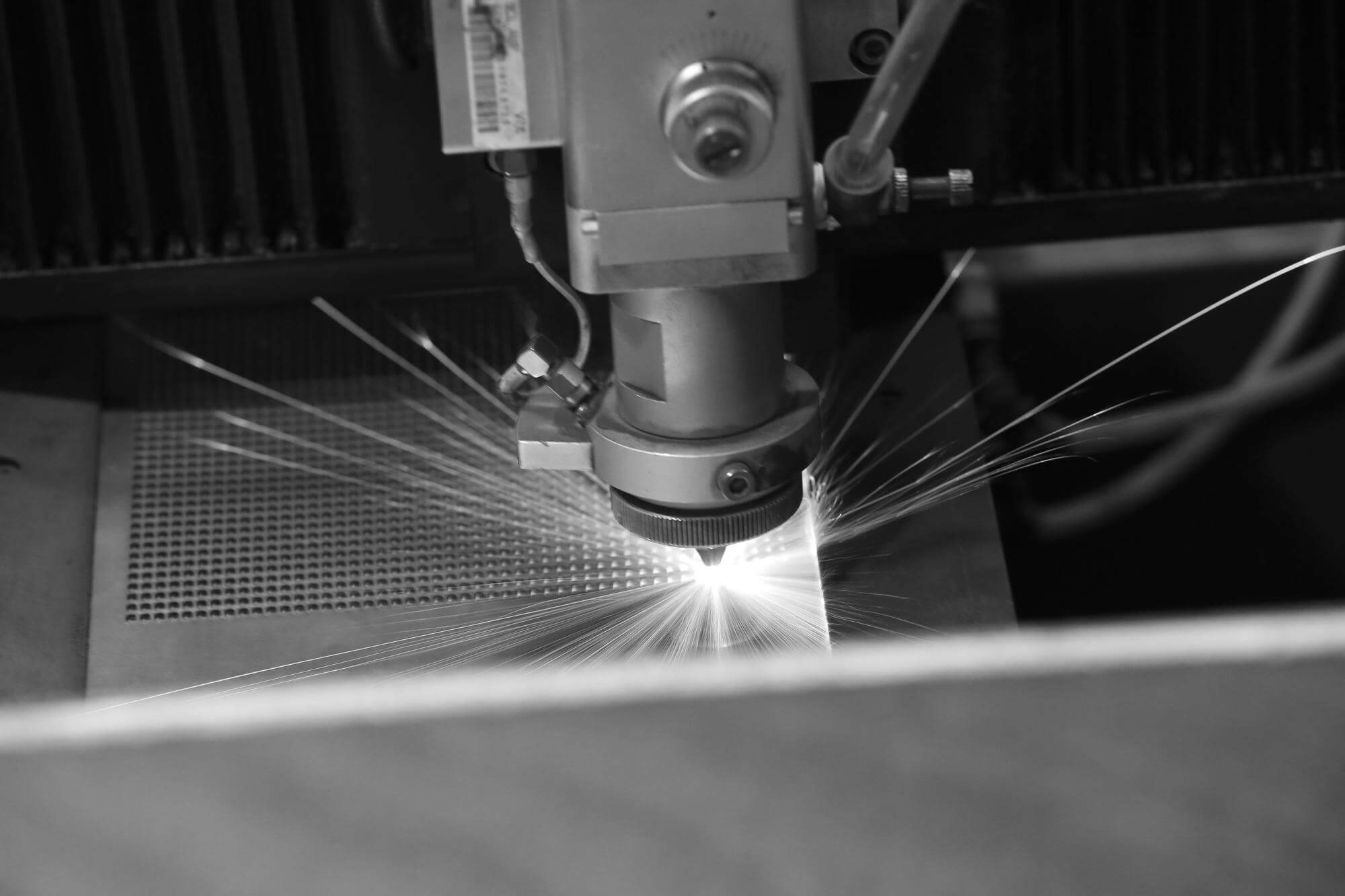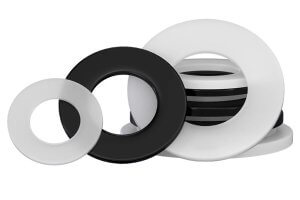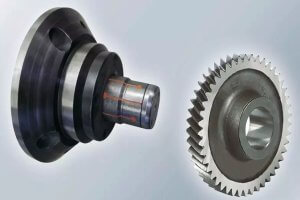Drilling polymer composites in CNC machining is a task that demands precision, expertise, and the right tools. As composite materials continue to grow in popularity due to their high strength-to-weight ratio and versatility, understanding how to efficiently machine these materials becomes crucial, especially for procurement professionals seeking to ensure quality and cost-effectiveness in their production processes. This guide is designed to help you navigate the complexities of selecting the right tools for drilling polymer composites, ensuring that you make informed decisions when choosing suppliers.
Understanding Polymer Composites in CNC Machining
Polymer composites, typically composed of a polymer matrix reinforced with fibers like glass, carbon, or aramid, are widely used in industries ranging from aerospace to automotive due to their superior mechanical properties. These materials, however, present unique challenges during machining, particularly during drilling. The anisotropic and heterogeneous nature of composites can lead to issues like delamination, fiber pull-out, and rapid tool wear, making the choice of drilling tools a critical factor in the success of the machining process.
Key Considerations in Tool Selection for Drilling Polymer Composites
When drilling polymer composites, the selection of the right tools can significantly impact the quality of the drilled holes, the efficiency of the process, and the longevity of the tools themselves. Here are the key factors to consider:
1. Tool Material
The material of the tool used for drilling composites plays a crucial role in determining its effectiveness. High-speed steel (HSS) and tungsten carbide are commonly used for drilling composites, but with varying degrees of success.
- High-Speed Steel (HSS): HSS tools are widely used for their affordability and versatility. However, when drilling composites, especially those reinforced with abrasive fibers like glass or carbon, HSS tools tend to wear out quickly. This makes them less ideal for high-volume or high-precision applications.
- Tungsten Carbide: Carbide tools offer higher wear resistance and can maintain a sharp cutting edge longer than HSS tools. This makes them more suitable for drilling abrasive composite materials. However, carbide tools are also more brittle, which can lead to chipping or breaking if not handled correctly.
- Diamond-Coated Tools: For the most demanding applications, diamond-coated tools provide the ultimate in wear resistance. These tools excel in drilling tough composites, offering extended tool life and superior hole quality. However, their high cost can be a limiting factor for some applications.
2. Tool Geometry
The geometry of the drilling tool is another critical aspect that affects the performance during the machining of polymer composites. The following geometric features should be considered:
- Point Angle: A lower point angle (around 90°) helps in reducing the thrust force and minimizing the risk of delamination, especially at the exit of the hole.
- Helix Angle: A higher helix angle (30° to 45°) aids in efficient chip removal, reducing heat buildup, which is crucial in preventing material damage during drilling.
- Cutting Edge Sharpness: A sharper cutting edge is essential for clean cuts and to minimize the occurrence of fiber pull-out, which can compromise the structural integrity of the composite material.
- Flute Design: The flute design affects the chip evacuation and heat dissipation during drilling. Straight flutes are preferred for drilling composites as they reduce the risk of splintering and delamination.
3. Cutting Parameters
Optimizing the cutting parameters is as important as selecting the right tool material and geometry. The key cutting parameters include:
- Cutting Speed: While higher speeds can reduce drilling time, they also increase heat generation, which can lead to material damage. It’s essential to find a balance that maximizes efficiency without compromising quality.
- Feed Rate: The feed rate should be optimized to ensure clean cuts and minimize the risk of delamination. A lower feed rate is generally preferred for delicate composites, while a higher feed rate can be used for tougher materials.
- Depth of Cut: The depth of cut per revolution should be carefully controlled to prevent excessive tool wear and maintain the integrity of the composite material.
Tool Selection Guidelines for Different Polymer Composites
Different types of polymer composites have varying properties that affect how they should be drilled. Here are some general guidelines for selecting tools based on the type of composite material:
1. Glass Fiber Reinforced Polymer (GFRP)
- Recommended Tool Material: Tungsten carbide or diamond-coated tools
- Point Angle: 90° to 100°
- Cutting Speed: 50 to 250 m/min
- Feed Rate: 0.05 to 0.3 mm/rev
- Depth of Cut: Up to 8 mm
2. Carbon Fiber Reinforced Polymer (CFRP)
- Recommended Tool Material: Diamond-coated tools
- Point Angle: 85° to 90°
- Cutting Speed: 200 to 800 m/min
- Feed Rate: 0.02 to 0.1 mm/rev
- Depth of Cut: Up to 5 mm
3. Aramid Fiber Reinforced Polymer (KFRP)
- Recommended Tool Material: Diamond-coated tools or carbide tools with a high helix angle
- Point Angle: 100° to 120°
- Cutting Speed: 75 to 150 m/min
- Feed Rate: 0.04 to 0.06 mm/rev
- Depth of Cut: 0.25 to 1 mm
Table 1: Tool Selection Guidelines for Different Polymer Composites
| Composite Type | Recommended Tool Material | Point Angle | Cutting Speed (m/min) | Feed Rate (mm/rev) | Depth of Cut (mm) |
|---|---|---|---|---|---|
| GFRP | Tungsten carbide, Diamond-coated | 90°-100° | 50-250 | 0.05-0.3 | Up to 8 |
| CFRP | Diamond-coated | 85°-90° | 200-800 | 0.02-0.1 | Up to 5 |
| KFRP | Diamond-coated, High helix carbide | 100°-120° | 75-150 | 0.04-0.06 | 0.25-1 |
Common Challenges and Solutions in Drilling Polymer Composites
Drilling polymer composites can present several challenges, including:
1. Delamination
Delamination, or the separation of composite layers, is a common issue in drilling. This can weaken the material and reduce the structural integrity of the part. To minimize delamination:
- Use a lower point angle to reduce thrust force.
- Optimize the feed rate to balance the material removal rate with the stress applied to the material.
2. Fiber Pull-Out
Fiber pull-out occurs when fibers are torn from the matrix during drilling, leaving an uneven surface. To reduce fiber pull-out:
- Use tools with sharp cutting edges.
- Consider using diamond-coated tools for their superior sharpness and wear resistance.
3. Tool Wear
The abrasive nature of composite materials can lead to rapid tool wear, reducing the effectiveness of the drilling process. To combat this:
- Choose tools made from or coated with wear-resistant materials like tungsten carbide or diamond.
- Regularly monitor tool wear and replace tools before they become too worn to perform effectively.
Table 2: Common Challenges and Solutions in Drilling Polymer Composites
| Challenge | Cause | Solution |
|---|---|---|
| Delamination | High thrust force, improper feed rate | Use lower point angles, optimize feed rates |
| Fiber Pull-Out | Inadequate sharpness, inappropriate tool material | Use sharp, diamond-coated tools |
| Tool Wear | Abrasive composite materials, high cutting speed | Use wear-resistant tools, monitor and replace tools |
Conclusion
Drilling polymer composites in CNC machining requires careful consideration of the tools and techniques used. By selecting the right tool materials, optimizing tool geometry, and adjusting cutting parameters, you can achieve high-quality results that meet the demands of modern composite applications. When selecting a CNC machining supplier, prioritize experience, advanced tooling capabilities, and a commitment to quality to ensure your projects are executed with precision and efficiency.
Other Articles You Might Enjoy
- Bead Blasting: The Secret to Quality CNC Machining(cnc machining tools Mavis)
The world of manufacturing has witnessed revolutionary changes with the advent of Computer Numerical Control (CNC) machining. It is a process used in the manufacturing sector that involves the use…
- Understanding CNC Machining: The Bead Blasting Process(cnc machining tools Valentina)
In the world of manufacturing, precision is paramount. One widely adopted method known for its precision is CNC machining. An integral subcomponent in the broader spectrum of CNC (Computer Numerical…
- CNC Aluminum Machining Services: Advanced Techniques for Perfect Parts
CNC Aluminum Machining Services In the current manufacturing landscape, CNC aluminum machining services play a pivotal role. CNC which simply translates to 'Computer Numerical Control', is an advanced technique used…
- Unlocking the Potential of Bead Blasting In CNC Machining(cnc machining tools Gerald)
Bead blasting is an integral process in Computer Numerical Control (CNC) machining, contributing to the finishing touches that enhance both aesthetic and functional aspects of manufactured parts. Whether you're a…
- Understanding Bead Blasting in CNC Machining(cnc cutting tools Evan)
In the realm of computer numerical control (CNC) machining, we often uncover complex processes designed to improve product outcomes. One such procedure that stands out is bead blasting. This technique…
- Comprehensive Guide to CNC Machining Brass Screws
Brass screws are widely used in various industrial and commercial applications due to their superior mechanical properties and attractive appearance. This article will delve into the characteristics of brass, the…






